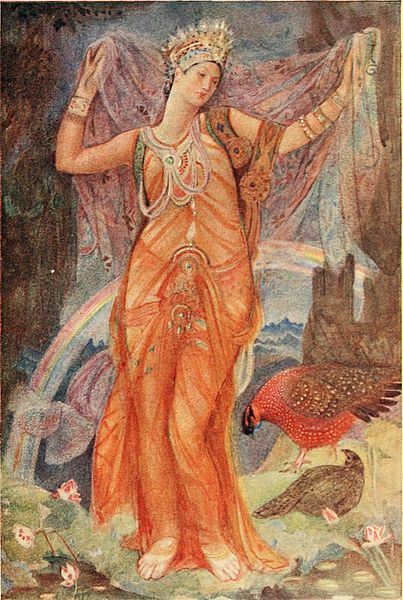Image: Myths and legends of Babylonia and Assyria (1916) (14801964123)

Description: Identifier: mythslegendsofba00spenuoft (find matches) Title: Myths and legends of Babylonia & Assyria Year: 1916 (1910s) Authors: Spence, Lewis, 1874-1955 Subjects: Assyro-Babylonian religion Mythology, Assyro-Babylonian Legends Cults Publisher: London : Harrap Contributing Library: Kelly - University of Toronto Digitizing Sponsor: MSN View Book Page: Book Viewer About This Book: Catalog Entry View All Images: All Images From Book Click here to view book online to see this illustration in context in a browseable online version of this book. Text Appearing Before Image: riants above enumeratedserve each to cast light on the other, and from acomparison of these we may succeed in arriving ata satisfactory conclusion. To begin with, however,it must be remembered that when the cult of anydeity has reached a fairly advanced stage it is impos-sible to assign to him any one department of nature,to say that he is a sun-god, a rain-god, a corn-god,for he may possess the attributes of all of these. Ingiving any god a departmental designation we arestriving to express his primitive or predominantcharacteristics merely. An Allegorical Interpfctation of the Myth A truly allegorical elucidation of the myth ofIshtars descent into Hades would depict Ishtar,as the goddess of fertility, seeking in the underworldfor her husband, the sun-god, slain by the icy breathof winter. During her sojourn in the nether regionsall fertility ceases on the earth, to be resumed onlywhen she returns as the joyful bride of the spring-tide sun. The surrender of her clothing and jewels136 Text Appearing After Image: The Mother-goddess Ishtar Evelyn Paul 136 AN ALLEGORICAL INTERPRETATION at the seven gates of Aralu represents the gradualdecay of vegetation on the earth, and the resumptionof her garments the growing beauty and verdurewhich mark her return. Another hypothesis identifiesIshtar with Dawkina, goddess of the earth, wife ofEa and therefore mother as well as consort of Tammuz.According to this view Ishtar represents not thefertiHty of the earth, but the earth itself, deprivedof its adornments of flowers and leafage by theapproach of winter, or variously, by the burningheat of summer. The waters of life, with whichshe sprinkles and restores her husband,^ are therevivifying rains which give to the sun-god hisyouthful vigour and glory. Against this view it hasbeen urged (e.g. by Sir James Frazer) that thereis nothiiig in the suns annual course within thetemperate and tropical zones to suggest that he isdead for half or a third of the year, and alive forthe other half or two-thirds. Alternati Note About Images Please note that these images are extracted from scanned page images that may have been digitally enhanced for readability - coloration and appearance of these illustrations may not perfectly resemble the original work.
Title: Myths and legends of Babylonia and Assyria (1916) (14801964123)
Credit: https://www.flickr.com/photos/internetarchivebookimages/14801964123/ Source book page: https://archive.org/stream/mythslegendsofba00spenuoft/mythslegendsofba00spenuoft#page/n170/mode/1up
Author: Internet Archive Book Images
Permission: At the time of upload, the image license was automatically confirmed using the Flickr API. For more information see Flickr API detail.
Usage Terms: No known copyright restrictions
License: No restrictions
License Link: https://www.flickr.com/commons/usage/
Attribution Required?: No
Image usage
The following page links to this image:

